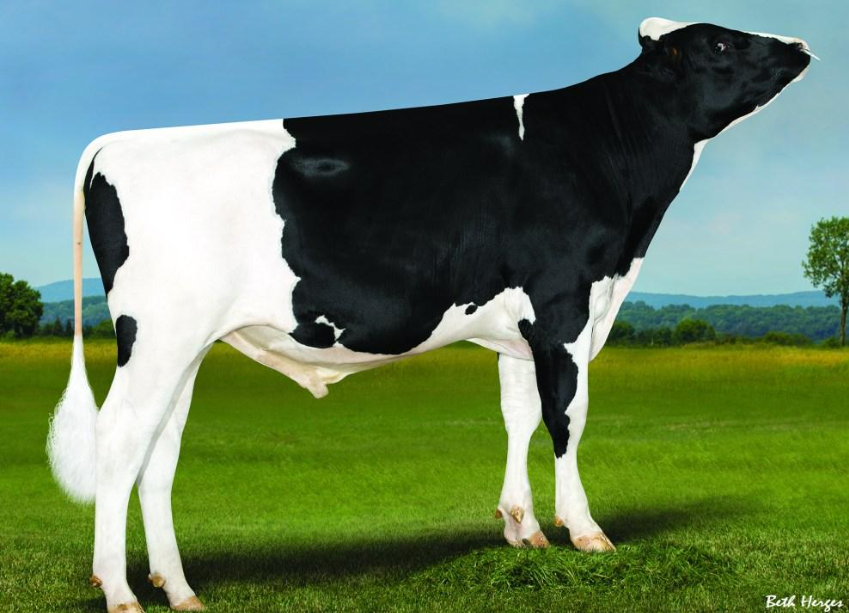Polled genetics are increasingly growing in popularity and refer to the natural inheritance of the polled gene, resulting in cattle that are born without horns. This trait is dominant, meaning that only one parent needs to carry the gene for the offspring to have the genetic potential to be hornless.
This genetic trait is gaining popularity due to its many benefits, including enhanced animal welfare and reduced labour for dehorning.
What are polled genetics and how are they determined?
A polled cow is one which was naturally born without horns as a result of its DNA.
The polled gene is a dominant trait in a cow’s DNA, whereas the horned gene is recessive. This means that only one parent, either the bull or mother, needs to carry that polled gene to have hornless/polled offspring.
There are two different types of polled sires, heterozygous and homozygous. Heterozygous animals have one copy of the polled gene, and homozygous have two copies of the polled gene. Sometimes these are referred to as (P) and (PP).

50% of a heterozygous (p) bull’s progeny will be polled, where as 100% of a homozygous (pp) bull’s progeny will be polled.
When searching through sire directories, you might see that some of the bull names contain a (P) or (PP), this is to indicate whether or not that particular sire has the heterozygous or homozygous polled gene.
Where did polled genetics come from?
Polled genetics isn’t a new phenomenon. There is evidence of polled cattle in U.S. dairy herds since the records began. The polled gene in the Holstein breed entered the U.S. with cows imported from the Netherlands in the latter part of the 1800s.
The polled gene has since spread throughout the US and Canada. However, they remain in low numbers within the Holstein breed, and are nowhere near as prevalent within the global dairy population as horned animals.
Polled cattle haven’t historically been selected within dairy strategies with farmers opting for traits that have a higher economic impact on their herds such as milk production, calf health or fertility.
Benefits of polled genetics
- Advantage for dairy cattle – polled cattle don’t need to be dehorned, so will undergo a less stress during a crucial time for their growth and milk production.
- Benefit for the dairy producer – producing polled instead of horned cows will mean farms don’t have to expend the time, cost or labour of having to dehorn those cattle.
- Benefit for consumers – The truth is, consumers have a large influence in the way dairy farms operate, and people want to get their milk from cattle that are contented and well cared for.
Polled vs. Horned Genetics: Is there a difference?
Some farmers might wonder if polled genetics are as good as horned genetics. At Genus ABS, we’re pioneers in genetic innovation, and we’re proud to offer superior polled genetics that are of equal calibre to our industry leading horned genetics.

